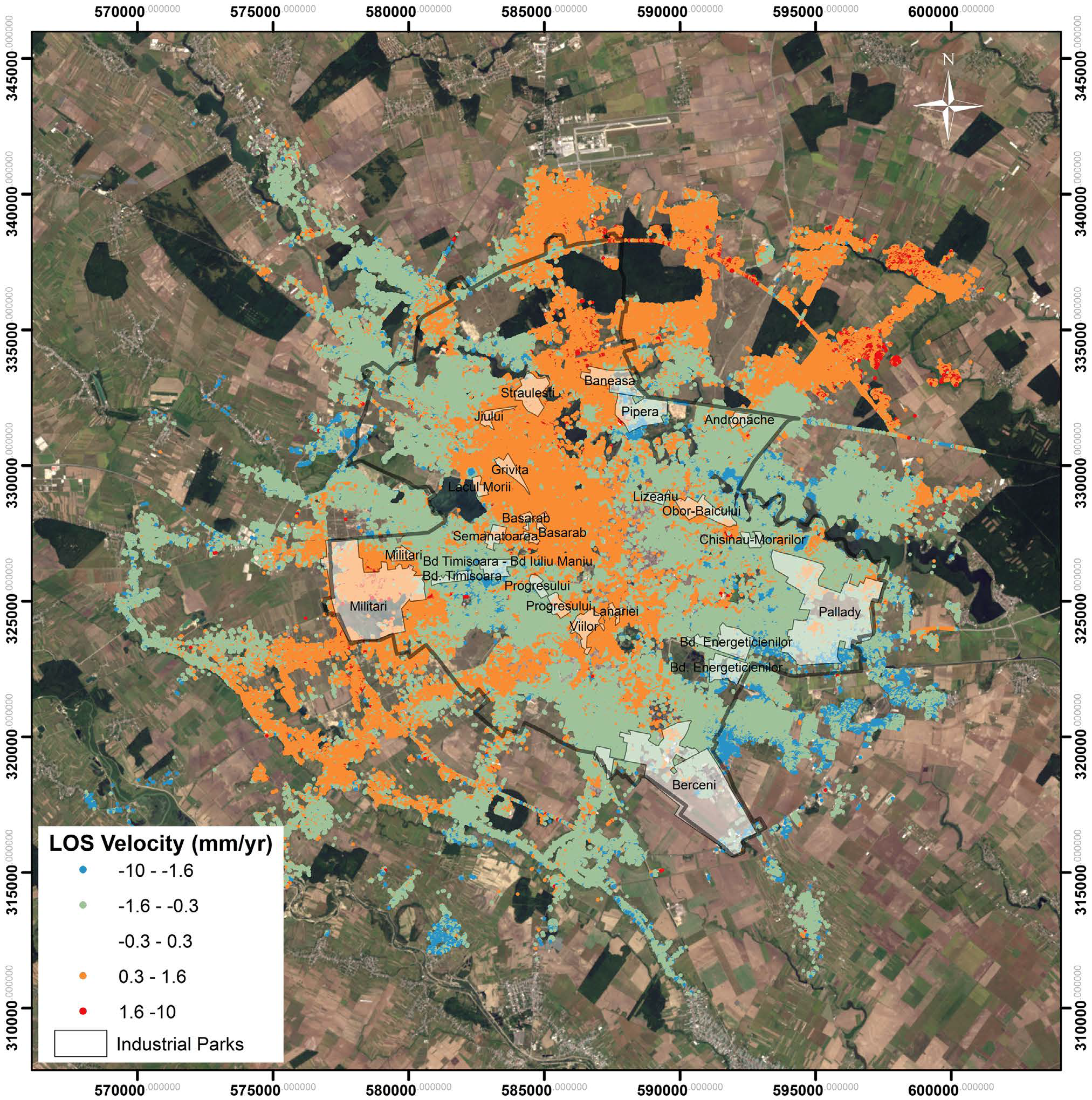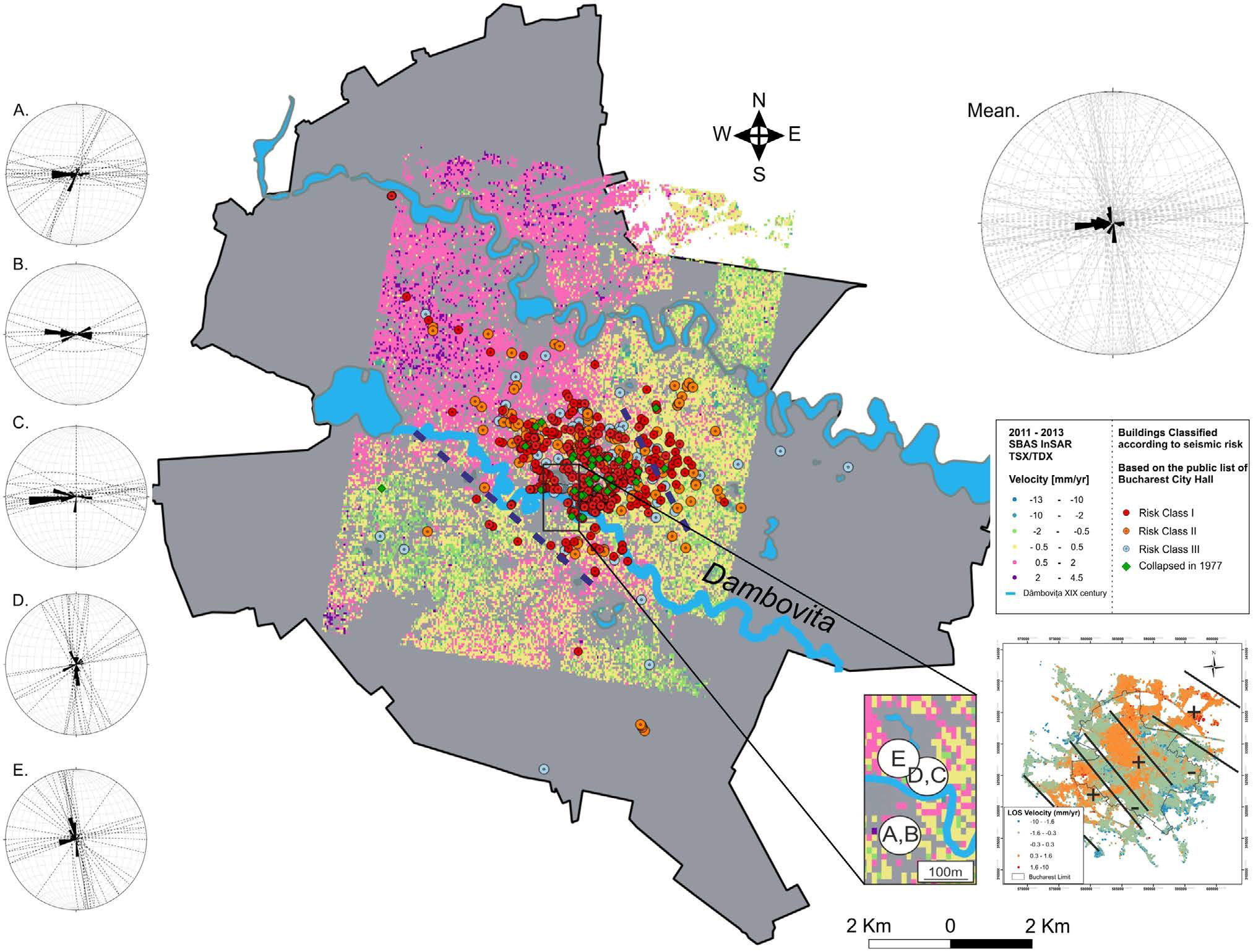Urban Ground Deformation Analysis Using SARscape
Multi-Temporal InSAR Captures Spatial Evolution Patterns in Bucharest
Background
The issue of ground displacements in urban areas is of great importance for the development of cities, due to possible instabilities induced by subsidence and uplift. When human interaction perturbs displacement trends with natural causes that act on a long time-scale, the issue gains even more weight. In earthquake-prone environments, understanding natural displacement patterns is important because they could become latent risk factors. Bucharest, the most earthquake-prone capital in the European Union, is often compared to Mexico City in terms of seismic hazards caused by distant earthquakes that affect tall buildings. Understanding long-term ground displacement trends is therefore of high importance.
A team of scientists led by Professor Iuliana Arma from the University of Bucharest, Romania has carried out a research to capture spatial evolution patterns in the Bucharest metropolitan area using sets of single polarized SAR satellite data and multi-temporal radar interferometry.
Multi-Temporal InSAR Analysis
Two sets of historical SAR data acquired between 1992-2010 were analysed (ERS -1/ -2, and ENVISAT), along with TerraSAR-X (TSX) data from 2011-2014. These datasets were used in conjunction with high-resolution multi-temporal interferometry (InSAR) methods incorporating both the SBAS and PS approaches to provide maps of line-of-sight displacements.
The datasets were imported in SARscape and analyzed to generate the following products:
- Mean displacement velocity
- Displacement history
- Measurement precision
- Height correction with respect to the input Digital Elevation Model (DEM)
- Total displacement
These remote sensing products were combined with results derived from classical cartography and field research to study possible trends in developments over former clay pits, landfill excavation sites, and industrial parks.
Using SARscape to Understand Changing Ground Displacement Dynamics
The displacement maps based on historical data revealed stable conditions over most of the city during each time interval, with the majority of points having velocities between -2 and 3 mm/year.
Large industrial parks constructed during the communist era on various landforms that can be found in Bucharest represented ideal test sites for identifying long-term evolution patterns through comparative analysis with the evolution trends of their neighboring areas. They displayed patterns that had been perturbed by human interaction in the past, but are now recovering towards their initial behavior. Natural long-term trends could be highlighted by contrast with overlaying short-term patterns caused by human interaction.
Better understanding these ground dynamics has led the authors to the possibility that the uplift recorded by the TSX data was the result of tectonic stress fields generated by transpressional movements related to the Intramoesian Fault system, located less than 40 km east of Bucharest. This suggested that Bucharest had been partially built on peripheral components of this fault system that were currently active.
If future studies support this idea, significant geodynamic and civil engineering implications may result. This may also be the reason for the distribution of the buildings classified as posing a seismic risk.
 SBAS InSAR ground deformation rates in Bucharest from 2011–2014 for TSX data.
SBAS InSAR ground deformation rates in Bucharest from 2011–2014 for TSX data.
 PS InSAR applied to TSX satellite data and rose diagrams showing the orientation of fissures from Bucharest in 2011–2014.
PS InSAR applied to TSX satellite data and rose diagrams showing the orientation of fissures from Bucharest in 2011–2014.
ACKNOWLEDGEMENTS: The content of this document is extracted from ARMA, IULIANA, et al. (2017): Long-term ground deformation patterns of Bucharest using multi-temporal InSAR and multivariate dynamic analyses: a possible transpressional system? - Sci. Rep. 7, 43762; doi: 10.1038/srep43762.